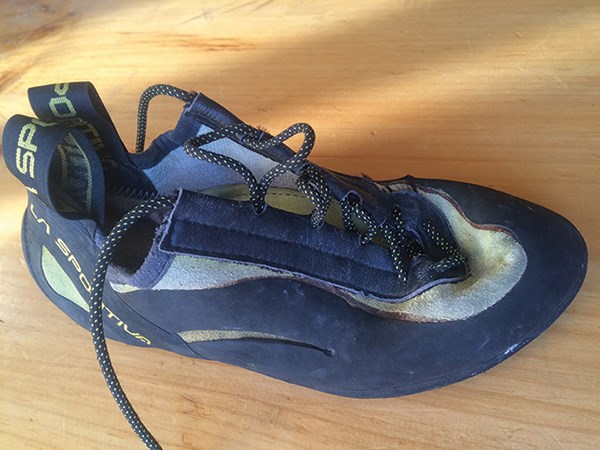Why do climbers the world over whine about perfect sunny days, hot temps and long summers? I will explain all this and more.
Lately this summer weather we’ve been feeling has got me down. Day after day, I wake up and the sun hovers in the sky without a wisp of cloud to hide beneath. The temperatures climb into the mid-30s and I sadly wave goodbye to routes left undone, to bouldering as a whole and start staring compulsively at my hands, hoping my skin hasn’t shuffled completely off like a snake changing its skin. Why? There is a deep and wide spectrum of reasons for this.
Any climber, having been caught high on a wall in the direct glare of the summer sun, can relate to my hesitations. You’re not quite far enough up a long route when the sun comes onto the face. Your water supply begins to fall more quickly than anticipated, the stone heats up and waves of heat roll off the face.
The merciless rays intensify, the wind stops and you cower, your back to the sun and head hunched, as you belay your partner for much too long. The tiny, black-soled boots on your feet barely contain your swelling appendages and you can swear the balls of your feet are blistering within your shoes. You start making strange decisions and your pace slows. Grumbling between partners is always a bad sign. Your hands feel puffy, your tongues stick to the roofs of mouths, your voices mere croaks and the pair of you finally holes up in the shade of a huckleberry bush, praying for wind and staring at the Little Stawamus River, the Squamish River and Howe Sound’s kite boarders with dark resentment.
The climbing shoes are a main point here. Heat from the sun negatively affects the performance of those tight, tiny, elfin boots that climbers wear.
Not only do feet actually blister within shoes on the extreme days but feet also swell, making shoes small chambers of hot agony. You can almost see toe nails bursting through leather and out into the void. Interestingly, the rubber that makes these shoes truly magical actually works better, sticking more solidly, when the temperatures are closer to zero. Sun-warmed soles shear off tiny crystals of quartz much more easily than firm cold rubber in the shade.
This accounts for many of Squamish’s hardest and most desperate slab climbs being completed in the winter months, not to mention most boulderers and sport climbers feeling that fall and winter days make up the best of their high performance season. Sweating climbers’ skin softens, is torn to shreds and loses vital friction compared to hard cool skin covered in chalk. We saw extreme evidence of this in the Dawn Wall’s ascent, where Tommy Caldwell and Kevin Jorgenson climbed the hardest pitches during winter nights, high up on the walls of El Capitan in Yosemite Valley. They did this for the best conditions for skin and shoes, and for cold stone that doesn’t encourage sweating.
The climbers who could argue in favour of the sun would be alpine climbers who need warmer temps because of the higher elevation of their rock, but even alpinists and mountaineers alike often pair up sunshine with deteriorating snow conditions, melting ice falling off, water running down routes, increased rock fall and more difficult travel in the backcountry with slushy wet snow travel.
From Baldwin and Cooper reportedly “sucking moths” high up on the Grand Wall in 1961 for water when they were really sucking moss, to drinking stagnant puddles, hording huckleberries to partners not speaking and nose-breathing so as to not lose moisture – people should go to great lengths to escape the sun and its effects in rock climbing.
Start early and pick your aspects carefully before you set off.
Finally, for all the epics that have resulted from dehydration, sun stroke and getting blasted by the sun, remember that at best you can sport a brutal farmer tan at the lake this summer and tell a tall tale when questioned about it.




